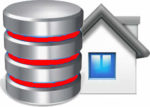Email marketing has faced a road full of twists and turns with the introduction of the Electronic Communications Directive, designed to halt the growth of unsolicited email, and the improving ability of readers to spot and tune out unwanted messages. Simply “playing the numbers” – sending out as many emails as possible, however and to whomever – no longer guarantees conversions.
Understandably, publishers like you might worry that the era of profitable email marketing is over, but we have good news. As the directive frees inboxes of unsolicited junk, publishers are seeing the rewards of delivering quality, trustworthy content.
So, would you like more conversions, fewer spam-blocks, better pass-along rates, and fewer opt-outs? If you would, keep reading. We’ll dish top strategies for creating the kind of sticky content that will keep your readers’ eyes glued!
Target
Make It Match
Begin by matching your campaign to your target audience. Offer your audience something they’ll immediately recognise as valuable. Also, your opt-in emails and newsletters should have the type of content your readers expected at sign-up. For example, if your site attracted customers by offering a trial product or service, offer free trials in follow up emails. This matching of expectations to content creates trust and receptivity, making it easier to sell to readers now and later. Customise further by using a first name greeting, up-selling a product of unique interest, or dividing your newsletter into multiple titles with narrow topics for different audiences.
Get Specific
Email content should cover one advertiser vertical – avoid too many links, cluttered text and multiple categories. Also, use specific, to-the-point copy; tell readers what they need to know and nothing more or you risk distracting them from the desired action.
Be Appealing
Successful campaigns have unique and attractive offers: coupons, discounts, bonus gifts, trendy or hard-to-come-by fads, and free trials. Events are also great excuses for a mailing. For example, “Summer is coming, get bikini buff in six weeks with our…” Notice the link between product and timing here? And entertaining or educational copy is powerful as well, so shake a dash of it in to spice things up. Lastly, the hook (phrase that pulls the reader into the email) should also be clearly stated in the first one or two sentences of the email. Bonus tip: high cost products tend to be less appealing in email marketing. Though not true in all cases, it’s best to promote lower-risk purchases.
Create
Offer New Stuff
Make sure your email offers something new: fresh advice, a new sale, a new product, an updated event calendar, or the latest news.
Incite Action
Often, emails offer good content, but fail to convert because the call-to-action area is not clearly displayed. Make sure your call-to-action is “above the fold” (seen without scrolling at a normal resolution). Also, use explicit phrases that appeal to a reader’s sense of urgency like “Act Now,” “Free Trial,” “Limited Time Offer,” or “Register Now.”
Generate Curiosity
With approximately 45 characters to convince a reader your email is worth opening, subject lines are extremely important. Make the subject line an honest reflection of the content inside, and use consistent subject and from line formats to help readers better recognise your emails and to build your brand. Use active instead of passive voice in your subject copy. An example of passive is “Many new deals have arrived this spring.” Active could be “Shop this spring’s hottest deals!”
Mix the Elements
After you’ve determined your offer and collected content, format that content (in text and HTML versions). Consider the following elements: subject line, headline, call-to-action, copy, descriptions, products, images, links, buttons, and form fields. Play around with these elements until you find the optimal design. Experiment with different quantities, words, lengths, images, colours, and positions. Bonus tip: The most successful campaigns are laid out vertically (eyes are drawn up and down instead of back and forth).
Evaluate
Test Layouts
Evaluate multiple designs of your email with sample groups before releasing the campaign to your entire list. Many marketers use the A/B testing method, creating two versions of the same email with one differing element in each (for example, two phrasings of the call-to-action or subject line). Next, make two sample groups and send Format A to one group and Format B to the other. See which version converts better, repeat the process for multiple elements, and send the test-proven email to your whole list. Marketing Sherpa reported one company’s amazing results in testing creative content and layout. This company, Citrix Online, followed tips like those above to create content, and then evaluated it using the A/B process. In one test alone, they learned that removing product pricing information yielded a 50% higher conversion on their free-trial offer.
We know it’s early to mention, but the high volume holiday shopping season will be here in a jiffy, and it’s a great time to implement these strategies in your next email campaign. As you plan your holiday promotions, target readers by tying in a theme or event, like a special offer on holiday gifts. Create content with festive copy and images. Then A/B test to find out which email is most appealing to your readers. All this will lead to improved conversions – numbers you can count on.
Article written and produced by Commission Junction
